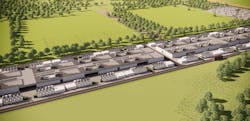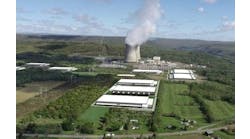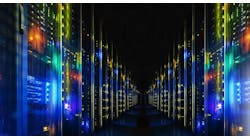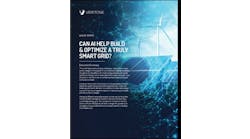Owners of data centers and other facilities with large loads are increasingly talking to microgrid providers about building off-grid microgrids to ensure they have electricity when utilities are power-strapped or when utilities can’t provide interconnection in a timely manner.
But it’s likely these microgrids will become connected to the grid. When utilities have enough capacity and when interconnection challenges ease up, the industries could convert them to grid-connected systems that provide grid services. This would involve integrating controls and intelligence into the systems.
That’s the message from Elham Akhavan, senior microgrid research analyst at Wood Mackenzie, which provides industry research.
Akhavan will speak about microgrid trends at Microgrid 2024, which takes place April 22-24 in Baltimore, Maryland.
A new trend for power-gobbling industries
“We are seeing a lot of microgrid providers of natural gas solutions or fuel cells offering a 24/7 solution for these larger loads to address utility constraints,” she said. “It wasn’t the case before; this is just happening now.” Up until recently, large load facilities have had a backup solution and have been grid connected. But because of grid constraints, they are choosing to be off-grid, she said.
Solar and storage microgrids generally aren’t economically feasible for 24/7 operations, Akhavan said. Instead microgrid providers are suggesting off-grid microgrids that use fossil fuels, renewable natural gas (RNG) and alternative fuels.
“This is an interesting trend. We’re going to see announcements soon,” she said.
Grid constraints during peak demand
It’s important to keep in mind that the grid’s main limitation, when it comes to meeting load growth, is its lack of resources to meet a few hundred hours of peak demand, said Thomas McAndrew, founder and CEO of Enchanted Rock, which provides microgrids that include gas and RNG.
“Microgrids can quickly and cost effectively provide the bridge power that data centers need to come online and then [can] repurpose the microgrid to provide valuable backup power and support the grid during periods of peak power needs,” he said.
Allan Schurr, chief commercial officer for Enchanted Rock, said that it may be possible for data centers and other large loads to obtain a utility interconnection if they can be off grid for a few hundred hours a year during peak demand periods. “In that case, no bridge power is needed for the hookup,” he said.
Utilities striking interconnection deals
For some large energy users, utilities are striking interconnection deals that reflect this strategy.
“I spoke to a utility this week that will provide an interconnection in exchange for interruptibility. In that situation, the microgrid covers the planned interruptions and any outages,” Schurr said.
In other situations, when the interconnection is delayed, the only way for these industries to start operations is self-generation. In that case, a microgrid makes sense because it can stay in place and provide long-term resilience and grid services, Schurr said.
Microsoft has contracted with Enchanted Rock to develop a 100-MW data center microgrid — the largest microgrid in California to date that will use RNG to offset fossil fuels. The on-site generators will not actually use RNG — they will be fueled by natural gas — but Enchanted Rock will inject an equal amount of RNG into the grid to offset the natural gas use.
New ways to address industries with large loads
A number of players are looking at ways to address the power draw from data centers and other companies with large loads.
Sidewalk Infrastructure Partners has created Verrus, a company that will construct new data centers designed to segregate critical and noncritical loads, then power them with microgrids that can employ the flexibility of batteries – along with flexible data center loads – to lower energy costs and carbon footprints.
Hydrogen fuel cells are seen as holding promise for data center power and general power generation for industrial use. Plug Power built a 3-MW, hydrogen-powered generation system for Microsoft. And Caterpillar recently completed a demonstration project showing how hydrogen fuel cells can support critical load at a Microsoft data center’s electrical plant in Cheyenne, Wyoming.
More utility microgrids for California communities
While microgrids are gaining ground in these industrial applications, they’re also being proposed by utilities for residential neighborhoods, especially in California, said Akhavan.
In California, increases in the number of community microgrid proposals have been spurred by $200 million in microgrid incentives for investor-owned utilities, she said.
This Microgrid Incentive Program focuses on bringing complex, community microgrids to disadvantaged and tribal communities vulnerable to power outages. It allocates $79.2 million for Pacific Gas & Electric, $83.3 million for Southern California Edison and $17.5 million for San Diego Gas & Electric.
“The incentives are supporting a lot of activity on the community side, less on the residential and single homes side,” Akhavan said.
From microgrid proposals to deployments
As for the microgrids for data centers and other industrial applications, Akhavan is seeing mostly proposals – for now. Soon, she expects to see action on those proposals, she said.









